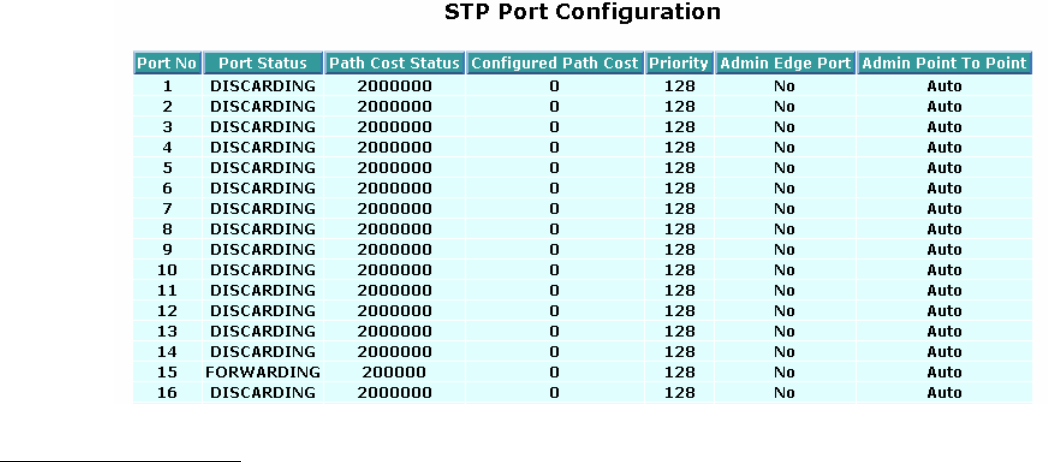
3.12.3 STP Port Configuration
In the STP Port Setting, one item selection and five parameters settings are offered for user’s setup. User can
disable and enable each port by selecting each Port Status item. User also can set “Path Cost” and “Priority” of
each port by filling in the desired value and set “Admin Edge Port” and “Admin Point To Point” by selecting the
desired item.
Parameter description:
y Port Status:
It displays the current state of a port. We cannot manually set it because it displays the status only.
There are three possible states. (according to 802.1w specification)
DISCARDING state:
It indicates that this port can neither forward packets nor contribute learning knowledge.
Notice: Three other states (Disable state, BLOCKING state and LISTENING state) defined in the
802.1d specification are now all represented as DISCARDING state.
LEARNING state:
It indicates this port can now contribute its learning knowledge but cannot forward packets still.
FORWARDING state:
It indicates this port can both contribute its learning knowledge and forward packets normally.
y Path Cost Status:
It is the contribution value of the path through this port to Root Bridge. STP algorithm determines a
best path to Root Bridge by calculating the sum of path cost contributed by all ports on this path. A port
with a smaller path cost value would become the Root Port more possibly.
y Configured Path Cost:
The range is 0 - 200,000,000. In the switch, if path cost is set to be zero, the STP will get the
recommended value resulted from auto-negotiation of the link accordingly and display this value in the
field of Path Cost Status. Otherwise, it may show the value that the administrator set up in Configured
Path Cost and Path Cost Status.
802.1w RSTP recommended value: (Valid range: 1 - 200,000,000)
10 Mbps: 2,000,000
100 Mbps: 200,000
1000 Mbps: 20,000
39


















